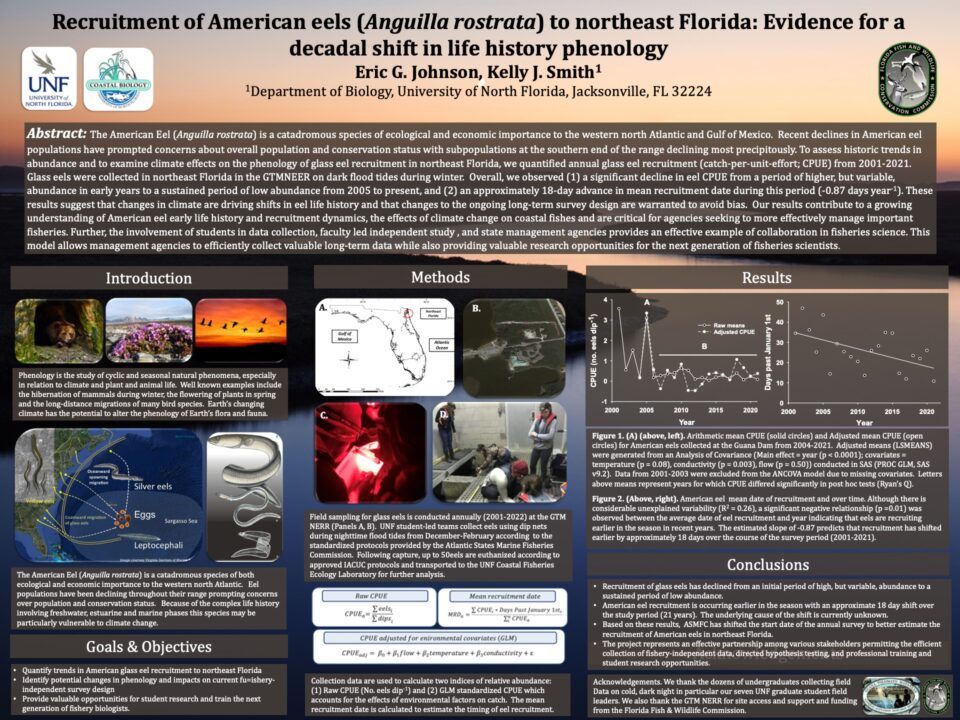Recruitment of American eels (Anguilla rostrata) to northeast Florida: Evidence for a decadal shift in life history phenology
- Copyright ©2022. Research projects are copyrighted by their authors. All rights reserved.
Author(s): Eric Johnson
Abstract:
The American Eel (Anguilla rostrata) is a catadromous species of ecological and economic importance to the western north Atlantic and Gulf of Mexico. Recent declines in American eel populations have prompted concerns about overall population and conservation status with subpopulations at the southern end of the range declining most precipitously. To assess historic trends in abundance and to examine climate effects on the phenology of glass eel recruitment in northeast Florida, we quantified annual glass eel recruitment (catch-per-unit-effort; CPUE) from 2001-2021. Glass eels were collected in northeast Florida in the GTMNEER on dark flood tides during winter. Overall, we observed (1) a significant decline in eel CPUE from a period of higher, but variable, abundance in early years to a sustained period of low abundance from 2005 to present, and (2) an approximately 18-day advance in mean recruitment date during this period (-0.87 days year-1). These results suggest that changes in climate are driving shifts in eel life history and that changes to the ongoing long-term survey design are warranted to avoid bias. Our results contribute to a growing understanding of American eel early life history and recruitment dynamics, the effects of climate change on coastal fishes and are critical for agencies seeking to more effectively manage important fisheries. Further, the involvement of students in data collection, faculty led independent study, and state management agencies provides an effective example of collaboration in fisheries science. This model allows management agencies to efficiently collect valuable long-term data while also providing valuable research opportunities for the next generation of fisheries scientists.



One Response
The results are really compelling, with the overall decline an expected consequence of climate change. However, I’m very curious about the associated decrease in variability, which seems a surprising result (to me, at least). You must have some hypotheses???